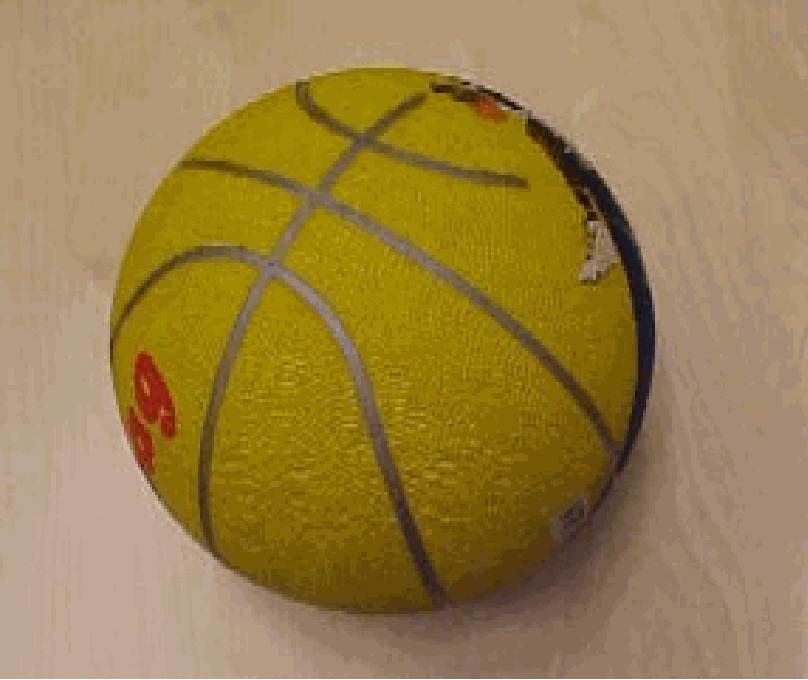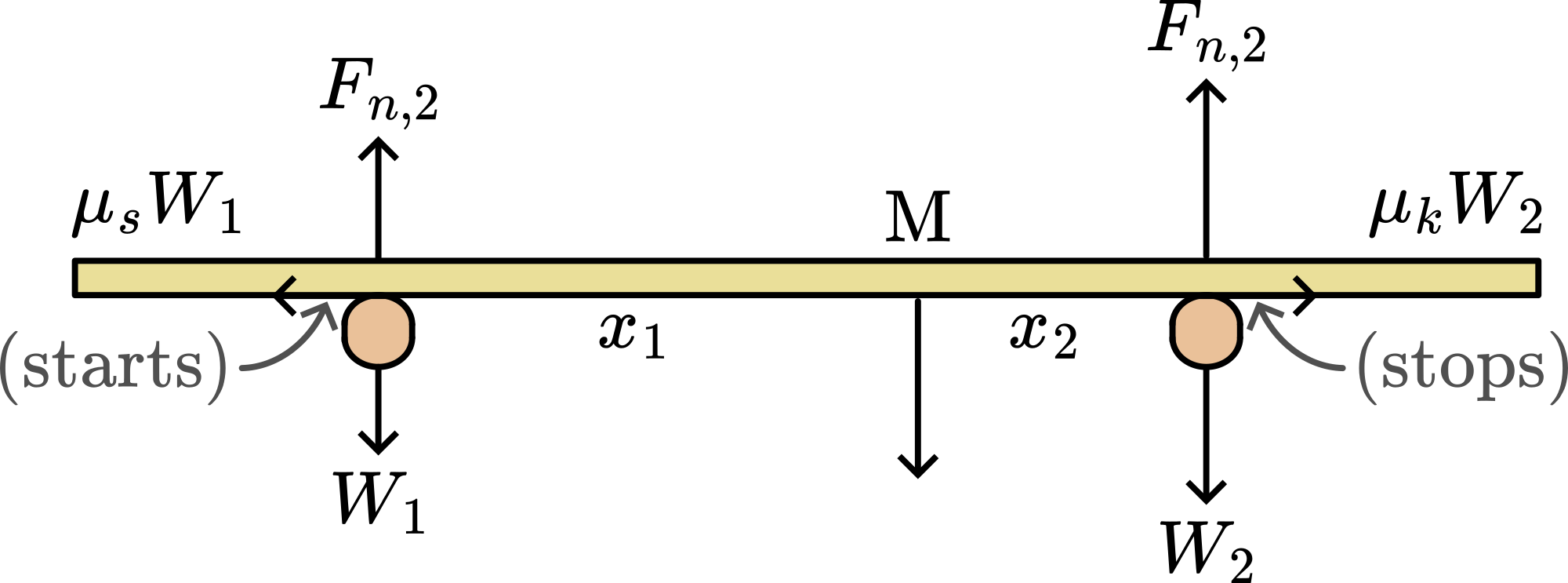07 Moving Two Fingers under a Meterstick#
Aim#
Showing that the relationship between the coefficients of static- and kinetic friction explains why two fingers supporting the ends of a meterstick always meet at the center of mass of the stick.
Subjects#
1K20 (Friction)
Diagram#

Fig. 120 .#
Equipment#
Stick, wood, about \(1.5 \mathrm{~m}\), with hooks at the ends, a clearly marked centre and blockmarks every \(2 \mathrm{~cm}\).
Small weight with ring.
Rubber glove or piece of rubber.
Presentation#
Let the stick rest on two fingers, so that the fingers are symmetrically near the ends of the stick. Ask the audience what will happen, when the fingers are slowly brought together (will the stick fall or not, where do the fingers meet?). The stick will not fall off the fingers. The point where the fingers meet is the point that divides the stick into two equal parts (halves).
The stick is layed asymmetrically on the fingers and the above experiment is repeated. Ask the same question to the audience. The result is the same: the stick will not fall and in this way the middle of the stick is found. The explanation (see below) using the term ‘friction’ is given.
Now friction is influenced by using one bare finger and one finger in a glove (or a piece of rubber as a finger). The same questions are asked and the same experiment is done. Probably the audience is astonished that the result remains the same, even under these circumstances.
As a last experiment the stick is made linearly inhomogeneous by hanging a weight on one end of the stick. Ask the same questions and perform the same experiment. The result is that the stick still won’t fall of the fingers but the place where the fingers meet is different this time. This part of the demonstration can also be done using a (large) broom.
Explanation#
Initially the stick exerts the same force on both fingers. When the fingers are moved, the force on one of the fingers will be greater than on the other. The finger closest to the middle of the stick will have the greater force and thus the greater friction. The other finger can slide towards the middle of the stick until the force on this finger is greater. Now the friction at the first finger is less, so this finger can move towards the middle, and so on until the fingers meet under the middle of the stick.
This is independent of the starting-point of the fingers and also independent of the type of friction.
According to the second condition for equilibrium, the fractions of the meterstick’s weight resting on your two fingers, \(W_{1}\) and \(W_{2}\), depend on the distances \(x_{1}\) and \(x_{2}\) to the centre, according to the relation \(W_{1} x_{1}=W_{2} x_{2}\). Just at the point where one finger stops moving and the other starts moving, the static-friction force of the fixed finger equals the kinetic-friction force of the moving finger: \(\mu_{s} W_{1}=\mu_{k} W_{2}\) (see Figure 121).

Fig. 121 .#
Combining the two preceding equations yields the condition \(\mu_{k} x_{1}=\mu_{s} x_{2}\). By observing just where one finger stops sliding and the other starts, you can measure the values of \(x_{1}\) and \(x_{2}\), and thereby determine the ratio of the two friction coefficients using \(\mu_{k} / \mu_{s}=x_{2} / x_{1}\).
Remarks#
You can, of course, make your fingers meet at some point other than the half-way mark by suddenly accelerating one of them, because in that case the friction force each finger exerts on the stick need not be the same. According to Newton’s second law, accelerations imply unbalanced forces.
Video Rhett Allain#
Sources#
Ehrlich, Robert, Turning the World Inside Out and 174 Other Simple Physics Demonstrations, pag. 49
Taylor, Charles, Art and Science of Lecture Demonstration, pag. 47
Friedrich, Artur, Handbuch der experimentellen Schulphysik, part 2, Mechanik der festen Körper, pag. 130
Vlaanderen, C.L., Physics Fair
Borghouts, A.N., Inleiding in de Mechanica, pag. 61
